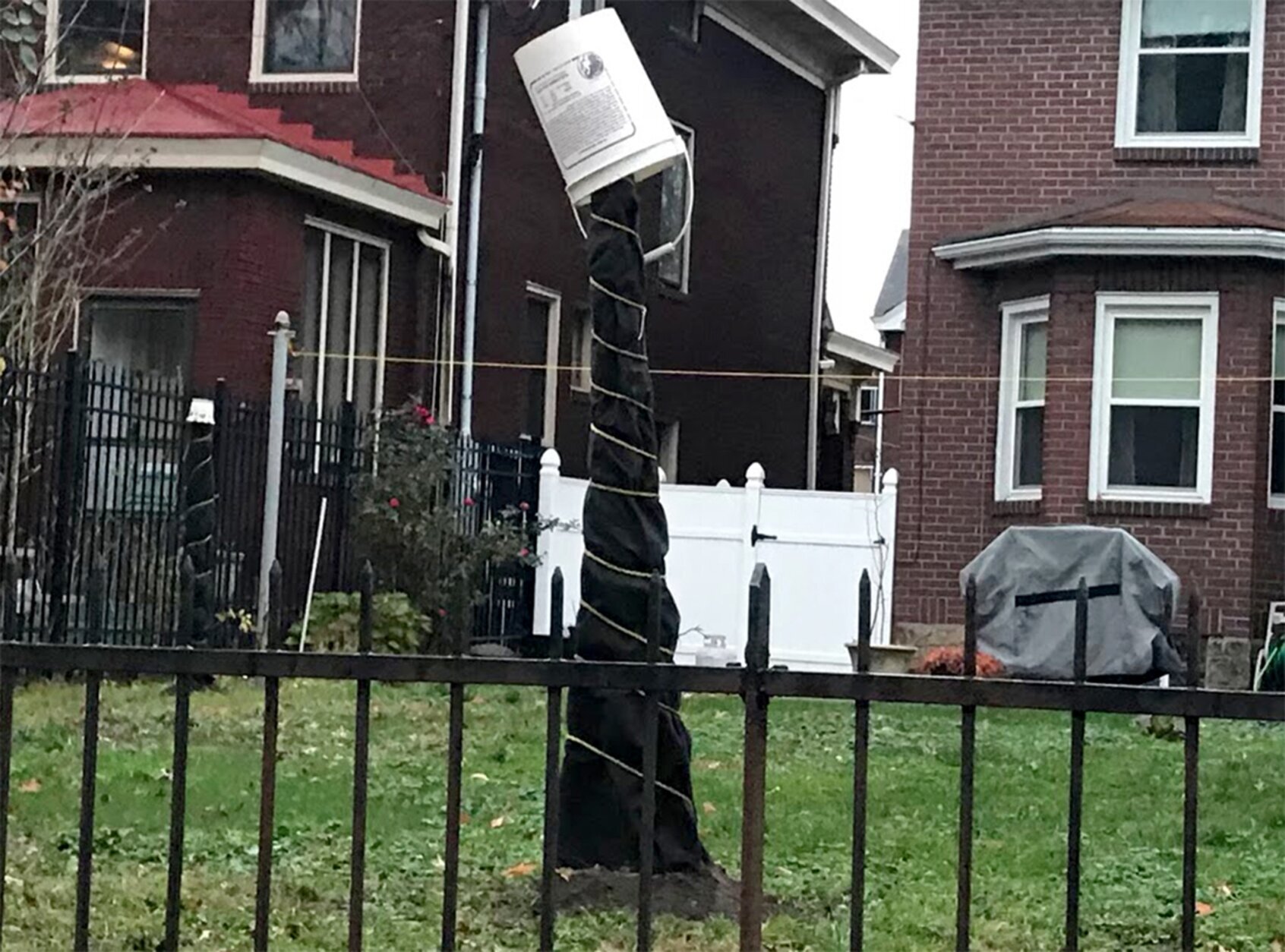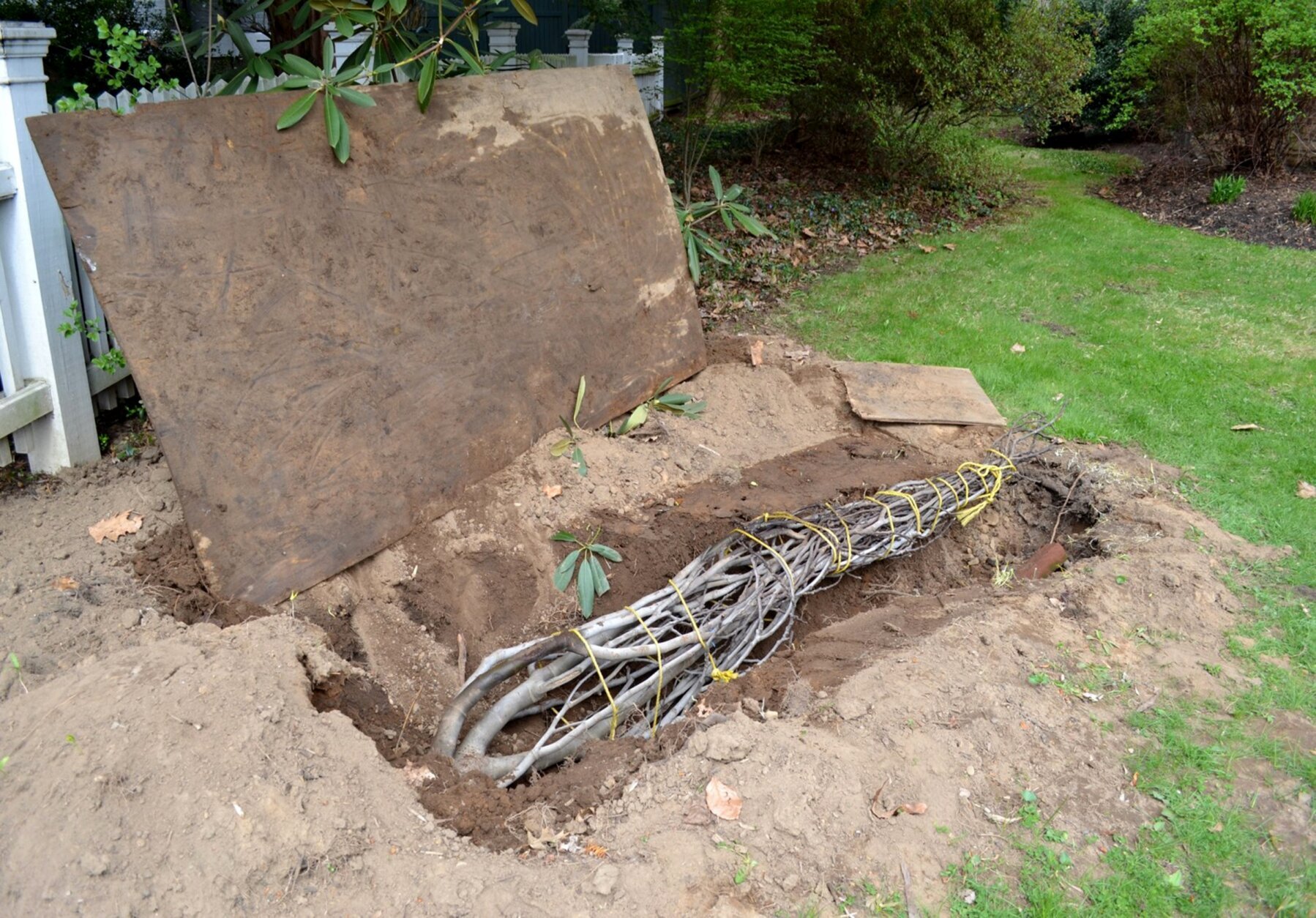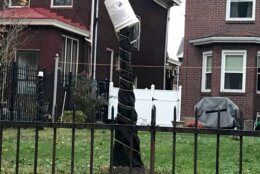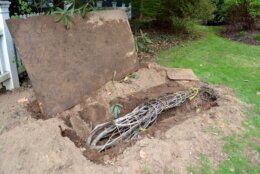If you’re growing fig trees where temperatures drop below freezing for extended periods, then an ounce of protection can be worth a pound (or more!) of figs.

Mary Menniti/TheItalianGardenProject.com via AP

Mary Menniti/TheItalianGardenProject.com via AP


If you’re growing fig trees where temperatures drop below freezing for extended periods, then an ounce of protection can be worth a pound (or more!) of figs.
Native to Mediterranean Europe, Asia and Africa, most mature fig trees can tolerate temperatures down to about 20 degrees. Some varieties, like Celeste and Hardy Chicago, are even more cold-hardy, but even they can succumb to deep freezes. Regardless of the variety, all benefit from some protection.
Depending on the weather and your pruning practices, your fig could grow into a shrub or tree form. Shrubby plants with multiple stems growing from the ground are best wrapped for winter; trees with a single trunk can be either wrapped or buried.
Either way, wait until the trees have dropped most of their leaves, which indicates dormancy (if a few leaves remain, it’s OK to remove them by hand before proceeding).
One popular burial method is “the Minnesota tip.” It involves digging a trench extending out from the base of the tree, about a foot deep, 2 feet wide and as long as the tree is tall.
To prepare the tree, gather its branches and tie them together with soft twine or rope.
Next, plunge a shovel into the soil about 2 feet from the trunk on the side opposite the trench. Lift that side of the root ball out of the ground.
Tip the tree toward the trench until it lies flat in the channel.
Cover the tree with a plastic tarp and tuck it in. This will help prevent damage in spring when you unearth it.
Pack soil around the exposed, lifted side of the roots, fill the trench, and mound at least 1 foot of soil over the tree. You’ll need more soil than you removed from the trench, so be prepared with extra.
If you’re wrapping the tree instead, you will need cardboard, a pail, and a roll each of burlap, heavy brown paper and tar paper.
If it is less than 3 years old, cut the tree back by one-third its size, then pull the branches inward and tie them together with soft but strong rope.
Working upwards from the bottom, wrap burlap around the tree, securing it to itself with pins or staples as you go. Then wrap heavy brown paper around the burlap and tie it into place.
Remove some soil from around the base of the tree, place a large sheet of cardboard into the small ditch you’ve created and bend it around the bottom one-third to one-half of the tree. Tie the cardboard into place.
Don’t give up; you’re almost done. Keep your eye on the juicy figs you’ll enjoy next summer.
Next, wrap tar paper around the tree, angling it outward from top to bottom so that it takes on a pyramidal shape. This will direct rain away from the tree.
Finally, mound soil around the tree’s base and place a pail upside-down over the top of your new garden sculpture to deflect rainwater.
Unwrap the tree on a cloudy day in early spring, just after the last frost.
If your friend or neighbor has gotten away with not protecting their fig tree, you might be tempted to throw caution to the literal wind.
I, too, have heard from several gardeners on the cusp of zones 6 to 7 who report fig-growing success without winter protection, and they are indeed lucky.
Sometimes, a garden’s specific microclimate, sunlight exposure or the tree’s positioning against a protective barrier like a wall can help it survive harsh weather. Although exceptions like those occur, conditions can vary significantly from garden to garden, and even between different areas within the same garden.
Discovering if you are one of the lucky few would require taking an unnecessary risk.
—-
Jessica Damiano writes regular gardening columns for The Associated Press. She publishes the award-winning Weekly Dirt Newsletter. Sign up here for weekly gardening tips and advice.
—
For more AP gardening stories, go to https://apnews.com/hub/gardening.
Copyright
© 2022 The Associated Press. All rights reserved. This material may not be published, broadcast, written or redistributed.
Stay connected with us on social media platform for instant update click here to join our Twitter, & Facebook
We are now on Telegram. Click here to join our channel (@TechiUpdate) and stay updated with the latest Technology headlines.
For all the latest Lifestyle News Click Here
